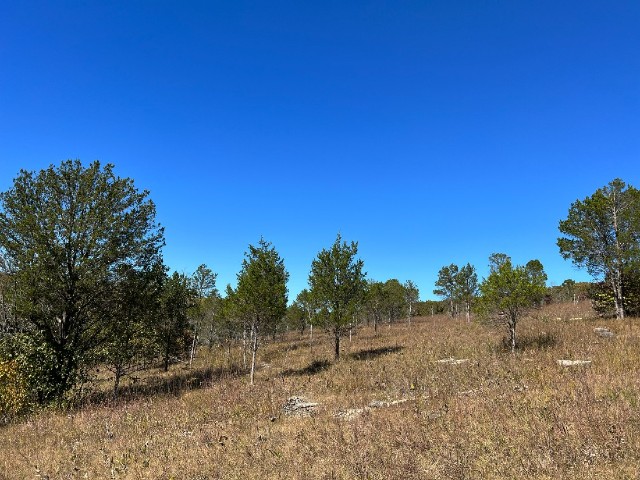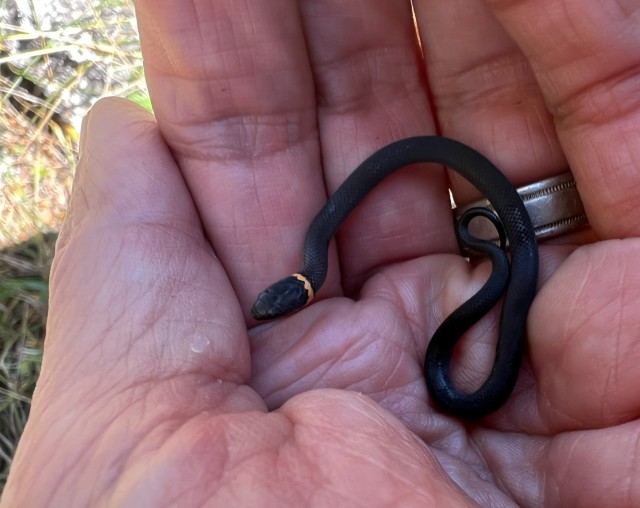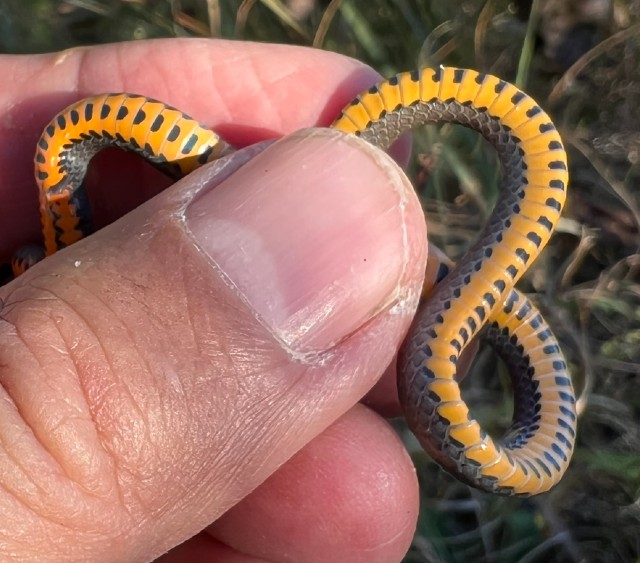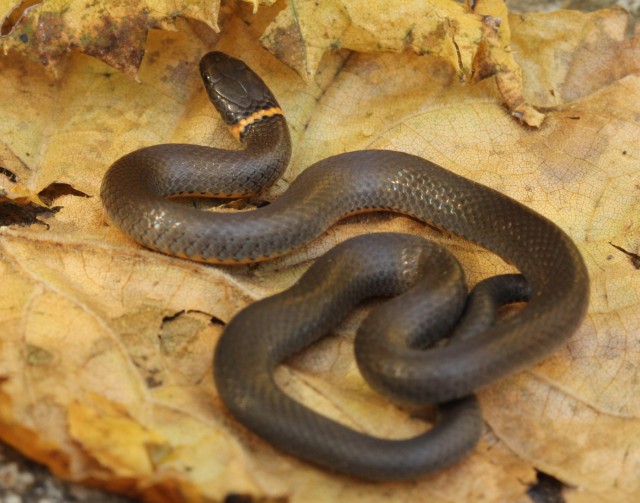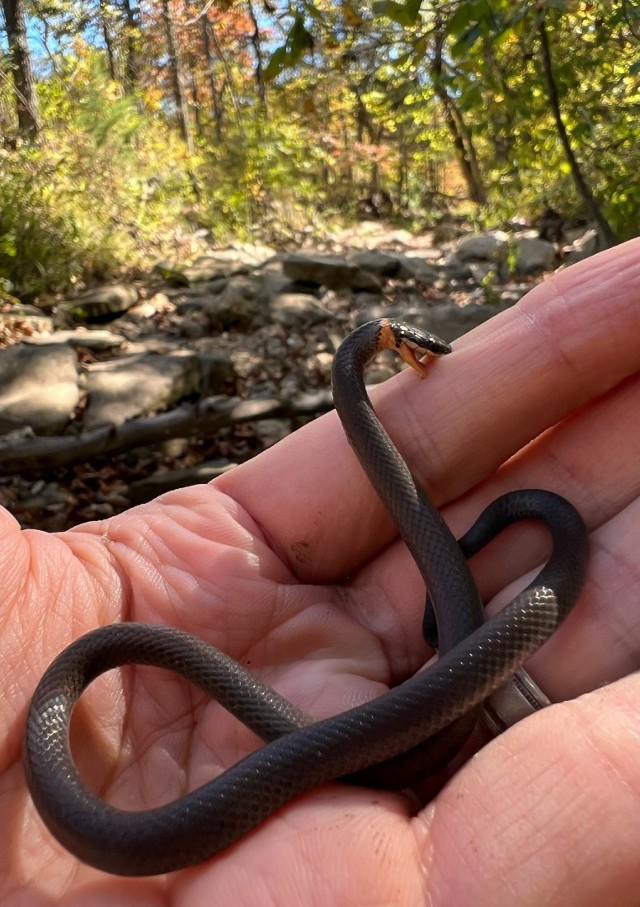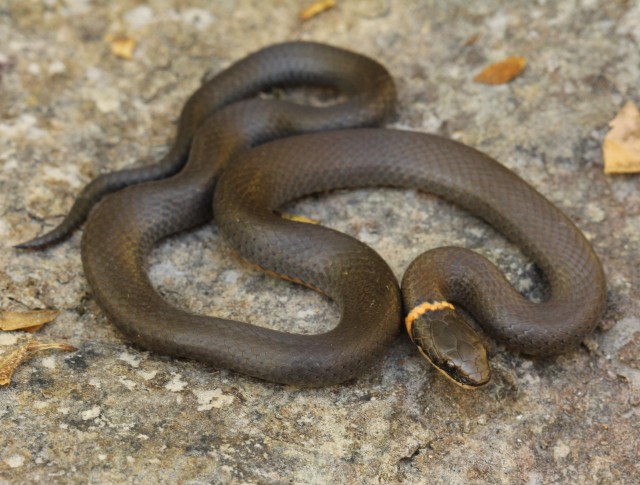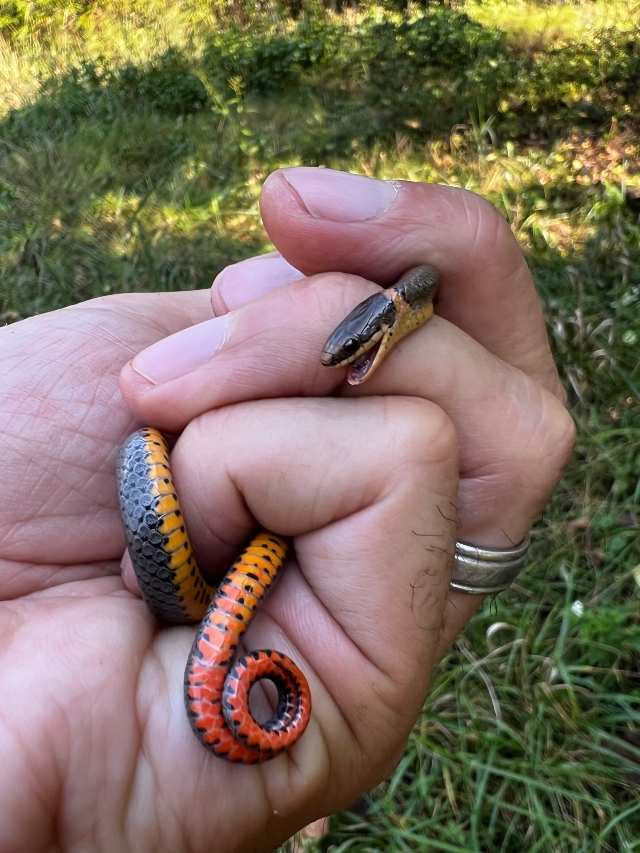While exploring a glades habitat in Missouri, I came across a few examples of this fine serpent. Ringneck Snakes are easily recognizable by their small size, uniform dark color on the back, bright yellow-orange belly, and distinct yellow ring around the neck.
The Prairie Ringneck Snake tends to live in open or partially open canopy settings including bluff prairies, open rocky road cuts (usually southerly exposed), old fields with rocky structures at the surface or along railroad grades where access to underground retreats and overwintering habitat is suitable.
These snakes are highly secretive, spending much of the day under flat rocks, pieces of bark or in and under large woody debris. In the Spring and Fall, they usually remain in open-canopy conditions, but move to more shaded and moist places as Summer approaches.
When alarmed, this species will coil its tail and expose its brightly colored underside. When captured, it usually does not bite (though this one did), but will discharge a pungent, unpleasant musk from glands at the base of the tail.
These snakes not only take shelter under rocks but also find prey there — primarily earthworms, but also slugs, soft-bodied insects and small salamanders. Although they are completely harmless to humans, these snakes have weak venom in their saliva which they use to subdue their prey.
Prairie Ringneck Snakes are egglayers, with females laying 1-10 eggs and averaging four per clutch. There is evidence that this species may nest communally. Eggs are laid in abandoned small mammal burrows or under large flat rocks and hatch in late August or early September.
We usually think of snakes as fierce predators, and no doubt that is how earthworms, slugs, and insects view this species. But small snakes like this are equally as important as a food for other predators — including mammals, birds and many more.

